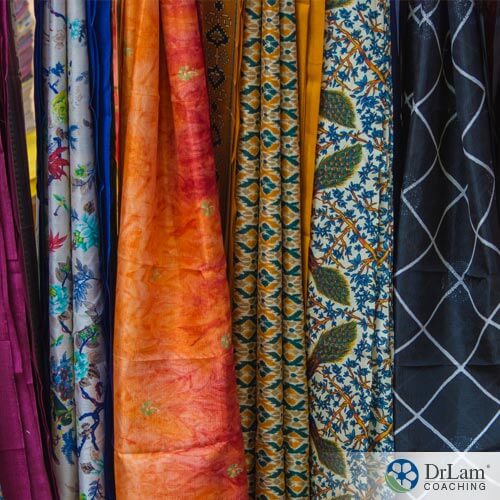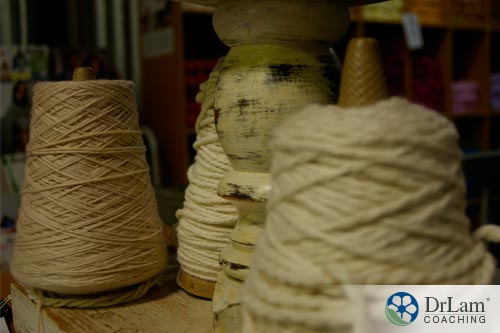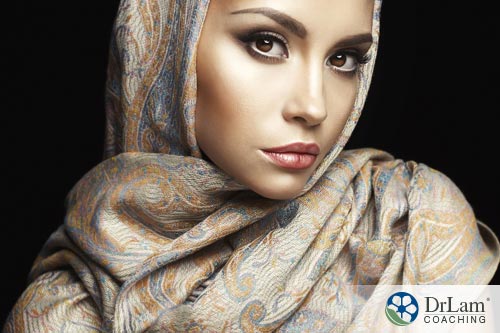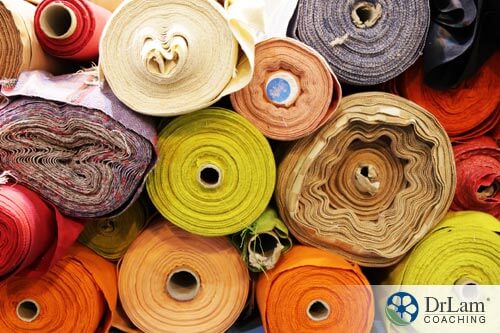 Even though you make sure to choose the best body butter, massage oil, and healthy foods for your skin, there is one more important factor that you might have been overlooking. Guess what always remains in contact with your skin? Fabrics. There are various types of fabrics on the market. However, selecting healthy fabrics ensures your skin and body is in optimal health. Glowing skin says a lot about your health. Skin is the largest organ of your body, and it performs a vital role in various crucial bodily functions. Therefore, it is important to take good care of it.
Even though you make sure to choose the best body butter, massage oil, and healthy foods for your skin, there is one more important factor that you might have been overlooking. Guess what always remains in contact with your skin? Fabrics. There are various types of fabrics on the market. However, selecting healthy fabrics ensures your skin and body is in optimal health. Glowing skin says a lot about your health. Skin is the largest organ of your body, and it performs a vital role in various crucial bodily functions. Therefore, it is important to take good care of it.
Your skin can look simple from the outside. However, it is a very complex multitasking organ playing a multitude of crucial roles such as protecting your body against the external environment, regulating body temperature, minimizing water loss, excreting waste from the body in the form of sweat, and helping to detect sensations such as cold, heat, pressure, and pain. With such various functions to perform, the health of your skin is extremely important.
Scientifically, the skin can be classified into three different layers – the dermis, epidermis, and subcutaneous layer. Each of these layers is responsible for performing important functions in keeping your body healthy. The surface of your skin contains thousands of tiny pores and hair follicles. It is through these tiny pores that your skin breathes, absorbs moisture from the air, and releases sweat, which helps maintain an ideal body temperature. The fine hair follicles protect your skin against dust.
As your skin is always in direct contact with fabrics, the type and structure of fabrics can significantly influence the health of your skin. What you wear determines the health of your skin. Therefore, it is important to pay attention to the type of fabric. From clothes, undergarments, socks, and towels to bed sheets, switching to healthy fabrics allows your skin to breathe freely, preventing rashes, allergies, and other skin issues that can damage your overall health. On the other hand, using synthetic fabrics restricts your skin from breathing, clogs skin pores, and causes rashes. Further, the chemicals from synthetic fabrics can seep through tiny skin pores and settle into your tissue, thus increasing the toxic load on your body.
 Did you know that fabrics and stress are interrelated? Using certain fabrics on your skin can trigger stress. For instance, synthetic fabrics can restrict the natural breathing of your skin and cause skin rashes, triggering sensitivity which, in turn, can exert stress on your body.
Did you know that fabrics and stress are interrelated? Using certain fabrics on your skin can trigger stress. For instance, synthetic fabrics can restrict the natural breathing of your skin and cause skin rashes, triggering sensitivity which, in turn, can exert stress on your body.
This is why people who already have sensitivities need to pay closer attention to their fabrics. Those with allergies to wool, latex, or with skin conditions such as psoriasis, eczema, or dermatitis need to select their fabric with extra care to prevent any triggers and stress. Chemicals from fabrics can enter the skin pores and reach the internal parts of your body, increasing the toxic load, and thereby triggering stress.
Your body responds to stress through the NeuroEndoMetabolic (NEM) Stress Response system, which is an intricate network of organs and six circuits including the detoxification circuit. A pair of walnut-shaped adrenal glands present on the top of your kidneys is also an important part of the response system. When a stressful situation arises, the NEM stress response signals your adrenals to secrete the anti-stress hormone cortisol.
However, when stress is persistent, the adrenals soon become overburdened and are no longer able to secrete adequate cortisol. This reduces your body’s natural stress-fighting ability, thus causing adrenal fatigue. Experiencing extreme fatigue along with symptoms of low energy levels, brain fog, reduced concentration levels, insomnia, anxiety, constipation, stubborn weight gain, or craving for fatty and salty foods could be an indicator of Adrenal Fatigue Syndrome (AFS).
Avoiding stressors is a vital part of the adrenal recovery process. Wearing uncomfortable fabrics such as synthetic products can restrict your skin from breathing and also cause rashes. Skin irritation from synthetic fabrics can trigger your stress response system, thus worsening the symptoms of AFS.
Healthy fabrics take care of your skin by reducing the chances of any skin irritation. Further, in advanced stages of adrenal fatigue, the body tends to have temperature regulation issues. Synthetic fabrics covering your skin can restrict air inflow and the natural breathing of your skin, which in turn can interfere with your body’s natural temperature regulation process.
The detoxification circuit of the stress response system is composed of the liver, lymphatic system, and kidneys. Any imbalance in it can cause chemical and environmental sensitivity, supplement and medication intolerance, and a compromised immune system. It is interesting to note that your skin is the largest waste removal mechanism of your body. It helps to detox your body by secreting sweat through the skin pores and sweat glands. Using healthy fabrics ensures your skin can perform the way it needs to for optimal health.
 When it comes to picking healthy fabrics, nothing can beat plant-based products. Once you consider factors such as the type of skin you have, local climate conditions, and any allergies or sensitivities you may have, you can choose from a range of natural fabrics that are great for your skin. They are gentle on your skin and help you avoid rashes.
When it comes to picking healthy fabrics, nothing can beat plant-based products. Once you consider factors such as the type of skin you have, local climate conditions, and any allergies or sensitivities you may have, you can choose from a range of natural fabrics that are great for your skin. They are gentle on your skin and help you avoid rashes.
These skin-friendly fabrics top the list:
Soft, light, and highly absorbent, cotton makes comfortable, classy, healthy fabrics for all ages. This natural, hypoallergenic, soft fabric is considered best for a new baby’s smooth skin. Cotton clothing is great for those with hot flashes as the fabric helps with temperature regulation. These fabrics also make an affordable solution for your bed sheets, towels, T-shirts, and trousers.
Untreated organic cotton is best for your skin. If you are a fan of printed fabrics, check for the ones that contain natural dyes. The high-breathability of cotton makes it the best fabric for your skin, especially if you are living in hot, humid conditions.
However, conventional cotton is heavily sprayed with insecticides, which pose a great threat to the environment. Furthermore, making the fabric involves a high level of resources and intensive labor. The textile finishing process also involves heavy chemicals which can include carcinogenic dyes. The harmful chemicals from these fabrics can penetrate into the pores of your skin and settle down in your body leading to various health issues. Thus, it’s best to look for organic and naturally-dyed cotton fabrics.
Flax is more sustainable than cotton as it can thrive on minimal irrigation and is naturally insect repellant, thus eliminating the need for pesticides. Made from the flax plant, linen fabrics are healthy fabrics for your skin and make a great style statement as well. Linen is naturally anti-bacterial, non-allergenic, and anti-static, and regulates temperature. Further, the fabric is capable of absorbing moisture to help keep your skin from feeling damp.
The hemp plant contains sustainable fiber and grows rapidly with less water than cotton requires. Fabrics from hemp are highly durable, making them last longer than other natural fibers. Further, the natural coloring in hemp fabrics reduces the need for dyes, making them even more skin-friendly. Another great thing about this durable fabric is it softens with every wash. Further, the dense foliage of hemp plants is excellent for counteracting harmful greenhouse gases.
 Strongest of all fabrics and breathable in nature, silk fabric is a natural temperature regulator which retains your body’s heat during cold weather and repels excess heat in warm weather. The fabric is hypoallergenic, thus keeping away dust mites and fungus. People with AFS should consider wearing light silk clothing as they tend to have weak immunity and can develop sensitivity to dust mites. The extremely smooth finish of silk fabric is gentle on your skin thus making it ideal for those with sensitive skin or with skin problems such as eczema or rashes. People who have received chemotherapy find relief in silk clothing as the fabric is light, soft, and does not cause friction on the skin.
Strongest of all fabrics and breathable in nature, silk fabric is a natural temperature regulator which retains your body’s heat during cold weather and repels excess heat in warm weather. The fabric is hypoallergenic, thus keeping away dust mites and fungus. People with AFS should consider wearing light silk clothing as they tend to have weak immunity and can develop sensitivity to dust mites. The extremely smooth finish of silk fabric is gentle on your skin thus making it ideal for those with sensitive skin or with skin problems such as eczema or rashes. People who have received chemotherapy find relief in silk clothing as the fabric is light, soft, and does not cause friction on the skin.
People supporting animal rights tend to avoid wearing silk garments, however. This is because several silkworm farms engage in killing the pupae prior to harvesting silk from the cocoon. Ahimsa silk, also referred to as peace silk, is preferred as the silk is harvested after larvae emerge from the cocoon.
Soft and gentle on skin, merino wool keeps you warm without causing any irritation. Clothing made of this wool helps retain your skin’s moisture. The incredible breathability of merino wool sets it apart from other wool, making it one of the best healthy fabrics. Merino wool is capable of releasing any excess warmth to prevent overheating, thus regulating your body temperature. This can prove especially helpful for people in the advanced stages of adrenal fatigue having issues in regulating body temperature.
Further, research shows that merino wool has therapeutic properties. The unique moisture content management of the soft wool could prove beneficial for eczema sufferers. A twelve-week clinical trial with eczema sufferers showed that wearing superfine merino wool clothing with a mean diameter equal to or less than 17.5 microns helped reduce symptoms.
Synthetic fabrics restrict your skin from breathing. Further, they also contain chemical dyes harmful to your health. Other, natural fabrics are not so good for your health or the environment. Here is a list of some fabrics you need to stay away from:
Being a natural material produced from sheep, wool breathes easily. However, the downside of wool is that it can trigger eczema flare-ups and can cause irritation even on normal skin. Further, sheep emit dangerous methane gases that are harmful to the environment. They are also often dipped in an insecticide bath for parasite control. Artificial dyes and bleaching agents are used to get the finished product which can irritate the skin. Merino wool is superior as it keeps you warm without irritating the skin.
If you have issues with your body temperature regulation, then you need to stay away from polyester clothing. Clinical trials show that wearing polyester reduces the hydration of your skin making it dry and causing skin irritation.
Produced from polyester and nylon, satin does not allow your skin to breathe. Though it might feel smooth on your skin, wearing satin clothes for longer hours especially during summer is not a wise idea. The fabric does not allow moisture and air to pass through it. The result - sweat - does not easily evaporate from your body, thus leaving behind body odor and clogged skin pores.
 Fabrics play a significant role in the health of your skin. Your skin is always in contact with clothing, so selecting the right fabrics is important. Synthetic fabrics such as polyester, satin, nylon, and rayon can restrict your skin from breathing, cause rashes and clog skin pores. Further, the chemicals from synthetic fabrics can enter your skin pores and settle into your system, increasing the toxic load on your body and triggering stress.
Fabrics play a significant role in the health of your skin. Your skin is always in contact with clothing, so selecting the right fabrics is important. Synthetic fabrics such as polyester, satin, nylon, and rayon can restrict your skin from breathing, cause rashes and clog skin pores. Further, the chemicals from synthetic fabrics can enter your skin pores and settle into your system, increasing the toxic load on your body and triggering stress.
Soft, light, and gentle on skin, breathable, highly absorbent, and hypoallergenic in nature, healthy fabrics are skin-friendly and environmentally safe. Some skin-friendly fabrics include cotton, silk, merino wool, flax, and hemp. They are the ultimate natural products to keep your skin happy and healthy. Allowing your skin to breathe naturally, prevents skin pores from clogging and helps maintain your ideal body temperature, helping to ensure your optimal health and well-being. Switching to healthy fabrics, eating a healthy diet, regular exercise, and good lifestyle choices are vital to keeping your skin vibrant.
People with insomnia find difficulty in falling asleep. Those with adrenal fatigue, respiratory disorders, skin problems, and other health issues often have disturbed sleep. Healthy fabrics are gentle on the skin. They enable your skin to breathe naturally, avoid friction, and help maintain an ideal body temperature thus promoting comfortable sleep.
